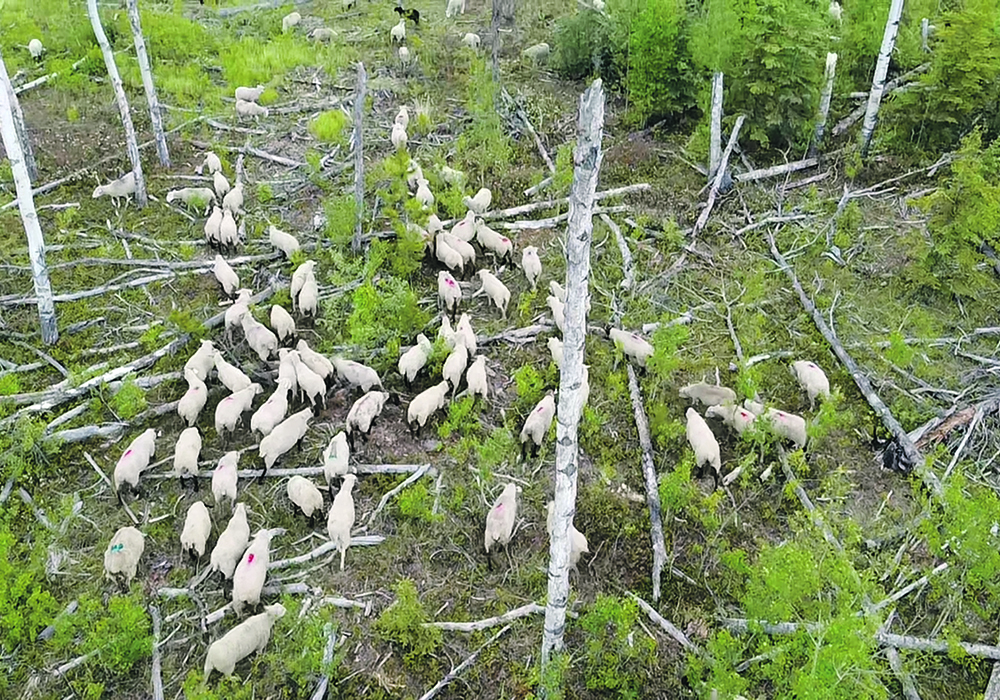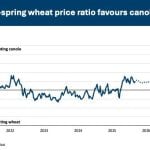Sheep put to work keeping grass under control in recently harvested timber stands as an alternative to herbicides
Tyler Niles never thought he’d see sheep helping to manage tree regrowth after timber harvesting.
The silviculture forester with Weyerhaeuser in Grande Prairie, Alta., said the sheep are proving useful in helping new trees gain a better foothold in cutblocks.
Cutblocks are areas with clear boundaries that have been approved for harvest. Companies like Weyerhaeuser that are granted licences for these areas are responsible to reforest the cutblocks with the same species they harvested.
However, a University of Alberta academic paper looking at reforestation success found that cutblocks previously assessed as satisfactory had declined. Thirty-six percent didn’t contain conifer trees because they had been outcompeted by aggressive grasses.
Read Also

Beef cattle more prone to trace mineral deficiencies
The trace mineral status of our cows and calves is a significant challenge for western Canadian producers and veterinarians.
That’s where the sheep come in.
“We really wanted to expand our tools,” says Niles. “Precision silviculture, the right tool at the right time.”
The process involves having sheep rotationally graze through designated cutblocks where foresters have replanted trees. The actual day-to-day management of the flocks is taken on by contractors, who hire their own shepherds and provide working dogs.
“We have 5,000 sheep grazing for us,” Niles says. “Every day I’m out there, I’m learning something new.”
With a five-year pilot project launched in partnership with the University of Alberta in 2020, Niles is looking to ground the grazing initiative in hard data.
“There’s no hard data yet but anecdotally, it is achieving the results we want.”
Traditionally, companies have used herbicides to manage the vegetation in “free to grow” zones around new plantings. As that practice has come under public scrutiny, Niles and others like him began to look for more options.
The idea of using sheep to graze the cutblocks was new to Niles but has historically been done in many countries around the globe. Norway, the United States and the United Kingdom have all made use of ruminants to manage vigorous competing species. As well, it has been used previously in some areas of Canada.
Ken Price, the contractor managing the sheep for Niles, said it is important to keep sheep from running, which causes trampled trees. When sheep are kept to a walk, tree damage is minimal.
“It always boils down to the dogs,” he says.
Experienced sheep dogs, mostly Border Collies, some up to 10 and 11 years old and worth thousands of dollars, are paired with often inexperienced shepherds.
“We hire young people, local farm kids, university students,” says Price. “Sheep experience isn’t necessary, we’ll train them.”
In groups of up to 10 to a block, the novice shepherds and their dogs can easily handle large flocks.
“We rarely have running sheep,” says Price. “Do not push on the sheep. Have your lunch or read a book, I don’t care, just don’t push on the sheep.”
Livestock guardian dogs are used to protect the flocks in their night pens, says Price, with rig mat floors and high panels to keep away predators. A 50-kilometre buffer zone is maintained between the flocks and any wild sheep populations to prevent disease transmission. Any sheep that are injured or ill are removed so stragglers don’t attract predators. Animal welfare is paramount, something Niles says is foundational for the project.
“Really good guardian dogs, clean camps. Animal welfare is key. If you keep the sheep healthy, it really eliminates predation.”
While sheep breed doesn’t seem to matter, Price notes the shepherds must use some sheep psychology to get things done as efficiently as possible.
“We use it as much as we can to reduce our workload,” he says. “Rambouillets and Merinos browse more. Suffolks will eat twice as much and Cheviots… well, you might be searching all summer for those Cheviots but you’ll never see a skinny one.
“If you have to cross a creek or something, the key is to get a Cheviot out front. They’ll just go for it. If you’re standing there with a Rambouillet, you might as well set up camp.”
The pilot continues until 2025 but until then, Niles is enjoying his site visits.
“The planning, the logistics — it caught me off guard. It’s eye-opening when you trail them with the dogs.
“It’s giving our trees a chance to get above the grazing layer, creating new jobs for shepherds and giving back to local economies.”















